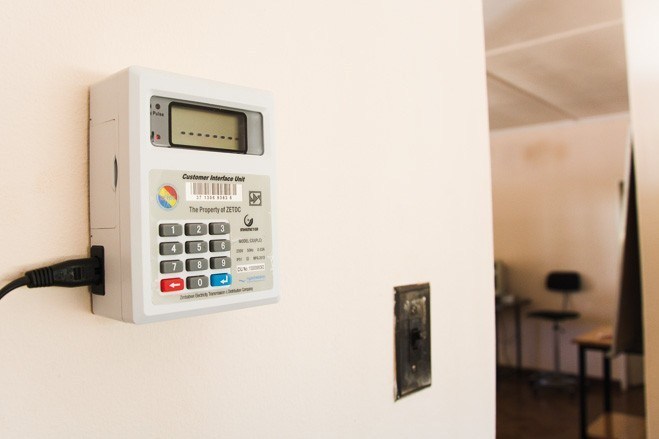Tariffs guarantee Zesa’s Eskom deal
Zimbabwe’s State-owned power utility, Zesa Holdings has paid part of the debt owed to foreign suppliers and averted the risk of being cut off.
Energy and Power Development Minister Zhemu Soda told Business Weekly in an interview that the staggered upward adjustment of the tariff since October this year afforded Zesa to extinguish part of the debt owed to Electricidade de Mozambique (ECD) and Eskom of South Africa.
In October this year, the Government said Zesa’s debt to ECD and Eskom had reached US$90 million heightening fears that the country could be switched off. Zimbabwe does not generate enough power and relies on imports to narrow the deficit. Average demand is 1 800 megawatts against current production of about 1 100MW.
“Two weeks ago, Zesa paid EDM and Eskom and they afforded to do that as a result of the reviewed tariff,” said Minister Soda.
“This has kept our supply deals alive because if we had been switched off, resuscitating the agreement was going to take long.”
The staggered upwards adjustment of the tariff has resulted in improved cash flows.
Zesa experienced a severe deterioration in cash flows between March and September this year. This was largely due to a sub economic tariffs, which had not been adjusted upwards in line with inflation and exchange rate as the Government sought to cushion citizens from the devastating effects of Covid-19 induced lockdown. Government imposed the lockdown at the end of March this year as part of measures to combat the global pandemic.
So dire was the situation that the power utility had
to approach the Treasury for a bailout. The bailout is still under consideration, Minister Soda said.
This week, Zesa further raised its tariffs by 50 percent. The first 50 units are now being charged at a base tariff of $1,67 per kWh from $1,11.
The next 150 units now cost $3,65 per kWh, up from $2,43.
From 201-300 units, consumers are now charged $9,92 per kWh, an increase of $6,62. Units above 300 will now attract a rate of $15,57, an increase from$10,38.
Early this year, ZESA added a new band — 201-300 units, which gives a total of 300 subsidised units from 200. In total the first 300 units costs $1,623, roughly US$20.
Last week, Zesa also started paying coal miners after the debt ballooned to above $1,2 billion over the past few months.
The surging debt was beginning to affect coal supplies to Zesa’s major thermal power stations, including Hwange, with the suppliers indicating serious incapacitation.
“There is an improvement in terms of payments . . . It is encouraging,” Coal Producers Association president Mr Raymond Mutokonyi, told out sister paper, The Herald.
Acting managing director of Zimbabwe Power Company, Zesa’s unit responsible for production of electricity, Wellington Maphosa, confirmed that they had started paying the miners.
Zesa operates Hwange Thermal Station, the country’s second largest power plants and three other small units in Harare, Bulawayo and Munyati. All small power stations are out of service.
Hwange is generating 315 MW against a potential 920MW and this is due to breakdown at some of the units. Kariba is generating 882MW against installed capacity of 1 050MW, according to statistics posted on the official website of Zimbabwe Power Company yesterday.
Earlier, the coal miners had warned of severe disruption of the commodity to thermal stations, arguing that failure by Zesa to clear the debt was incapacitating the producers.
This was going to harm the country’s power situation.-ebusinessweekl.co.zw











